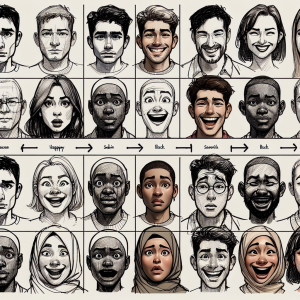Have you noticed an influx of cartoon-like profile pictures on your Facebook feed recently? Well, you’re not alone. The latest trend taking social media by storm is the Facebook cartoon filter, which transforms users’ photos into whimsical, animated versions of themselves. But what is it about this filter that has captured the attention of millions of users worldwide? Let’s dive into the psychology behind the popularity of Facebook’s cartoon filter and explore why it has become the latest craze in the digital world.
The Appeal of Nostalgia
One of the main reasons behind the popularity of Facebook’s cartoon filter is its ability to evoke feelings of nostalgia. Many users have fond memories of watching animated cartoons as children, and seeing themselves transformed into a cartoon character brings back those feelings of innocence and joy. The filter taps into our desire to relive the carefree days of our youth, providing a sense of comfort and familiarity in an increasingly fast-paced and chaotic world.
Furthermore, nostalgia has been found to boost our mood and increase feelings of happiness. By using the cartoon filter, users can temporarily escape the stresses of everyday life and bask in the warm glow of nostalgia, making it a welcome reprieve from the challenges of adulthood.
The Thrill of Self-Expression
Another reason behind the popularity of Facebook’s cartoon filter is the thrill of self-expression. The filter allows users to showcase their creativity and personality in a fun and engaging way. By choosing a cartoon character that resonates with them, users can communicate aspects of their identity that may not be easily expressed through words alone.
Additionally, the cartoon filter provides a sense of anonymity and freedom, allowing users to experiment with different personas without the fear of judgment. This freedom of self-expression can be empowering and liberating, giving users the confidence to share a different side of themselves with their friends and followers.
The Allure of Social Validation
Humans are inherently social creatures, wired to seek approval and validation from others. The popularity of Facebook’s cartoon filter can be attributed, in part, to the desire for social validation. By jumping on the bandwagon and using the filter, users can feel like they belong to a larger community of like-minded individuals, strengthening their sense of social connection and belonging.
Furthermore, the cartoon filter has a viral quality that encourages users to share their transformed photos with others, creating a ripple effect that fuels its popularity. Seeing friends, family members, and acquaintances join in on the trend provides a sense of validation and camaraderie, reinforcing the appeal of the filter and perpetuating its widespread adoption.
The Element of Playfulness
At its core, the Facebook cartoon filter is all about playfulness and fun. The whimsical nature of the filter appeals to our sense of childlike wonder and imagination, reminding us to embrace our inner child and not take ourselves too seriously. By using the filter, users can inject a dose of lightheartedness and joy into their social media presence, creating a more light-hearted and enjoyable online experience.
Additionally, the element of playfulness can act as a form of escapism, allowing users to momentarily step away from the demands and pressures of adult life. Engaging with the cartoon filter provides a brief respite from reality, offering a welcome distraction and a chance to engage in carefree play.
The Power of Visual Appeal
It’s no secret that visual content reigns supreme in the world of social media. Images and videos are more engaging and shareable than text alone, capturing our attention and evoking emotional responses. The popularity of Facebook’s cartoon filter can be attributed, in part, to its visual appeal.
The transformation of photos into cartoon-like images adds a whimsical and eye-catching element that stands out in a crowded social media feed. The bright colors, bold lines, and exaggerated features of the cartoon filter draw the eye and spark curiosity, enticing users to stop and take a closer look. This visual allure makes the filter highly shareable and encourages users to engage with and interact with the content.
Conclusion
In conclusion, the popularity of Facebook’s cartoon filter can be attributed to a combination of factors, including nostalgia, self-expression, social validation, playfulness, and visual appeal. By tapping into our desire for connection, creativity, and joy, the filter has captured the hearts and imaginations of millions of users worldwide, making it the latest craze in the digital world.
FAQ
Why is the Facebook cartoon filter so popular?
The Facebook cartoon filter is popular for its ability to evoke feelings of nostalgia, enable self-expression, provide social validation, offer a sense of playfulness, and captivate users with its visual appeal. These factors combine to make the filter a hit with users worldwide.
How does the Facebook cartoon filter impact users’ mental well-being?
The Facebook cartoon filter can have a positive impact on users’ mental well-being by boosting their mood, evoking positive emotions, fostering creativity, and promoting social connection. Engaging with the filter can provide a temporary escape from the stresses of everyday life and promote a sense of joy and playfulness.
Is there a downside to the popularity of the Facebook cartoon filter?
While the Facebook cartoon filter is generally seen as a fun and harmless trend, some users may experience feelings of FOMO (fear of missing out) or social pressure to participate in the trend. It’s important for users to remember that participation in social media trends is always optional, and they should only engage with content that brings them joy and fulfillment.








+ There are no comments
Add yours